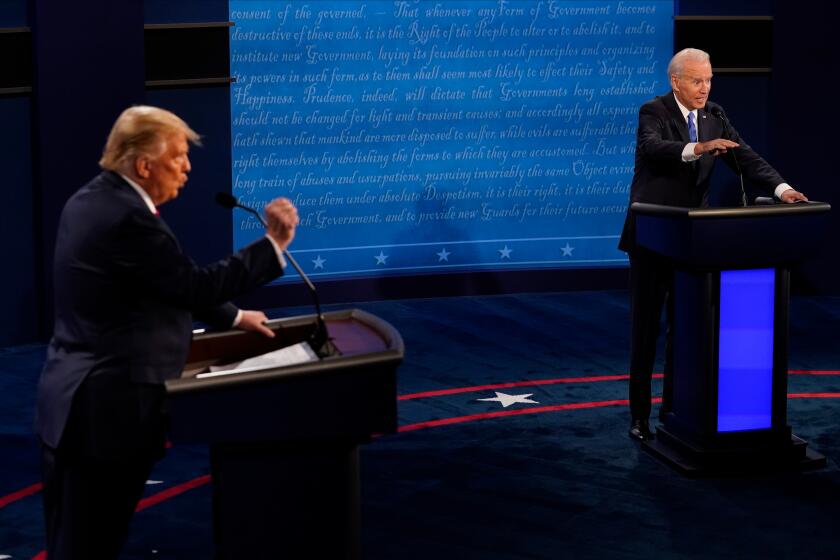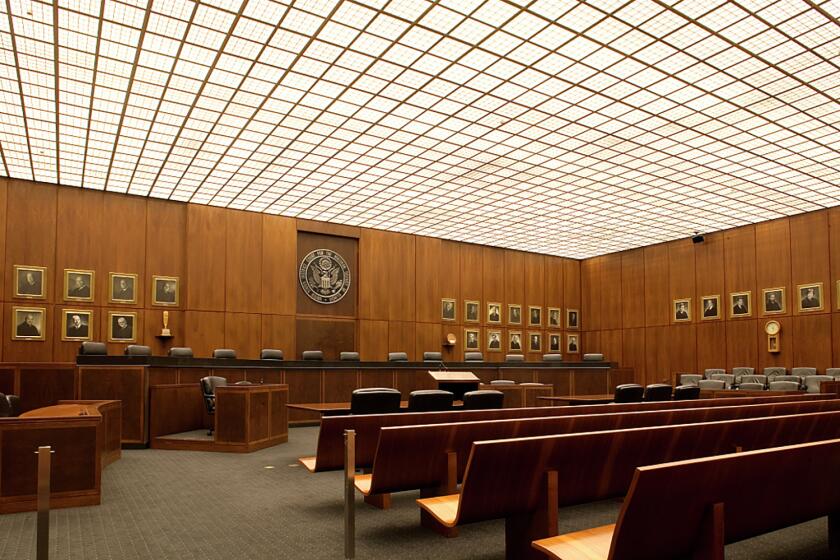Say no to more money for automakers
Having thrown his support behind a $2.5-trillion rescue for the banking industry, a $787-billion economic stimulus package and a $75-billion foreclosure prevention initiative, President Obama will convene a “fiscal responsibility summit” Monday to help craft a strategy for addressing the burgeoning national debt. It’s almost too late for that -- a new Brookings Institution study says the debt will grow by an average of $1 trillion a year for the next decade. Nevertheless, we hope the summit can supply something missing from the new administration’s sweeping bailout plans: a clear set of criteria for federal interventions. With Detroit automakers lining up for additional billions in loans, states teetering on the edge of default and industries begging for bailouts, the White House needs to learn when to say no.
One of the strengths of our economic system is the fact that the market, not the government, decides who wins and who loses. Sometimes, however, the market itself fails, triggering a vicious downward cycle. That’s what happened when the housing bubble burst, giving the Bush administration a Hobson’s choice: Stand back and risk the collapse of the interconnected banking industry, or step in to keep big firms from failing. If there was any doubt about the systemic nature of the problem, it was erased when Lehman Bros. went bankrupt and global credit markets went into seizure.
President Bush’s approach was scattershot, prompting Obama to seek comprehensive responses, such as the stimulus package and the banking rescue. To some, however, the message was that Washington would be nursing every one of the wounded back to health, which it obviously can’t do. Yet it’s not clear from its initiatives where the administration draws the line on government rescues.
We think it should be drawn this way: The government intervenes only when there’s a threat of epic collapse and temporary aid would prevent it. One way to get this point across is to tell General Motors and Chrysler that they aren’t too big to fail. The companies returned to Washington this week with reorganization plans that called for almost $22 billion in new federal loans -- $14 billion more than they earlier said they’d need -- along with deep cuts in their workforces, dealership networks and model lines. Although GM executives said the new amount would be enough to carry them to a self-sustaining future, that pledge was undermined by their unrealistic sales projections. The implication is that the additional billions would lock the government into providing an expensive financial lifeline.
Rather than trying to direct the companies’ restructuring, the administration should leave the job to bankruptcy courts, which were created for that purpose. It would still cost taxpayers billions to help GM and Chrysler move through the process in an orderly way and prevent the brands from becoming stigmatized beyond repair. There’s no question that the bankruptcies would radiate across other companies and communities. But the problems aren’t on the same scale as the ones in the credit markets, which are dragging us all down.
More to Read
A cure for the common opinion
Get thought-provoking perspectives with our weekly newsletter.
You may occasionally receive promotional content from the Los Angeles Times.






